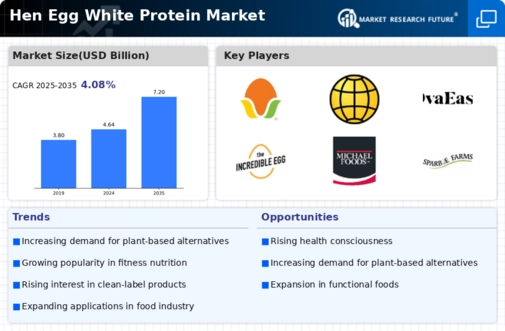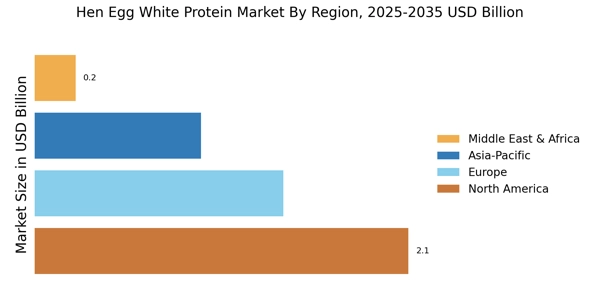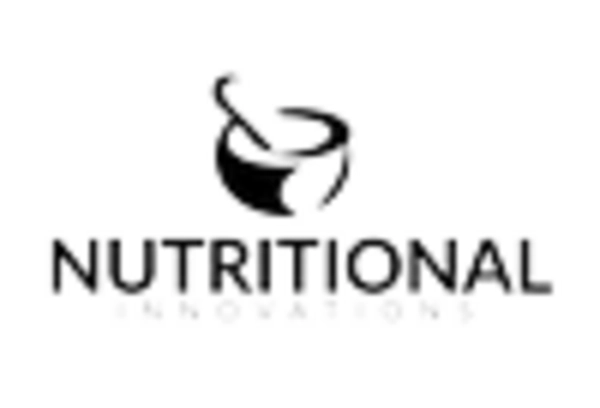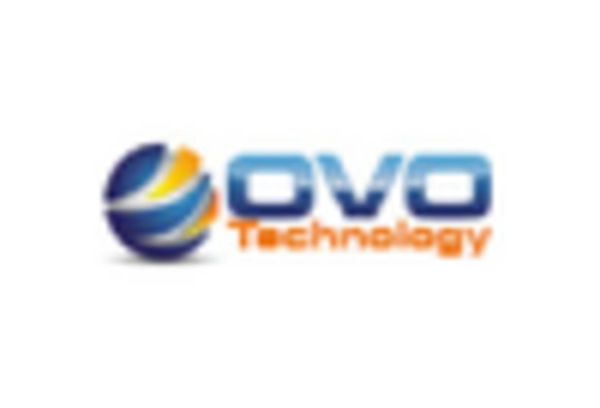Expansion of Plant-Based Diets
The Hen Egg White Protein Market is also impacted by the rising popularity of plant-based diets. While this trend may seem counterintuitive, many consumers adopting plant-based lifestyles are still seeking high-quality protein sources to complement their diets. Hen egg white protein offers a unique solution, as it is animal-derived yet low in fat and cholesterol. This dual appeal allows it to cater to both traditional protein consumers and those exploring plant-based options. Market analysis indicates that the plant-based food sector is projected to reach a valuation of over 74 billion dollars by 2027, suggesting that the Hen Egg White Protein Market could see increased integration of egg white protein in plant-based products.
Innovations in Food Technology
The Hen Egg White Protein Market is benefiting from advancements in food technology that enhance the functionality and application of egg white protein. Innovations such as improved extraction methods and formulation techniques are enabling manufacturers to create a wider range of products, from protein powders to ready-to-drink beverages. These technological advancements not only improve the quality of hen egg white protein but also expand its usability in various food applications. Market data indicates that the food technology sector is expected to grow at a rate of 6% annually, which could further stimulate the Hen Egg White Protein Market as companies leverage these innovations to meet evolving consumer demands.
Growth in the Sports Nutrition Sector
The Hen Egg White Protein Market is significantly influenced by the burgeoning sports nutrition sector. As athletes and fitness aficionados increasingly prioritize protein intake for muscle recovery and performance enhancement, the demand for high-quality protein sources has escalated. Hen egg white protein, known for its superior amino acid profile, is becoming a preferred choice among this demographic. Market data indicates that the sports nutrition segment is projected to grow at a compound annual growth rate of over 8% in the coming years. This growth is likely to propel the Hen Egg White Protein Market forward, as manufacturers innovate and develop products tailored to meet the specific needs of athletes and active individuals.
Rising Demand for Clean Label Products
The Hen Egg White Protein Market is witnessing a notable shift towards clean label products, driven by consumer preferences for transparency and natural ingredients. As consumers become more discerning about food labels, they increasingly seek products that are free from artificial additives and preservatives. Hen egg white protein, being a natural and minimally processed ingredient, aligns well with this trend. Market Research Future suggests that the clean label trend is expected to influence over 60% of food and beverage purchases in the near future. Consequently, the Hen Egg White Protein Market stands to benefit as manufacturers respond to this demand by incorporating egg white protein into a variety of clean label formulations.
Nutritional Benefits of Hen Egg White Protein
The Hen Egg White Protein Market is experiencing a surge in demand due to the increasing awareness of the nutritional benefits associated with egg white protein. Rich in essential amino acids and low in calories, egg white protein is perceived as a healthier alternative to other protein sources. This trend is particularly evident among fitness enthusiasts and health-conscious consumers who seek high-quality protein without excess fat. According to recent data, the protein content in egg whites is approximately 11 grams per 100 grams, making it an attractive option for those aiming to enhance their dietary protein intake. The Hen Egg White Protein Market is thus likely to continue expanding as more consumers recognize the advantages of incorporating this protein source into their diets.


















Leave a Comment